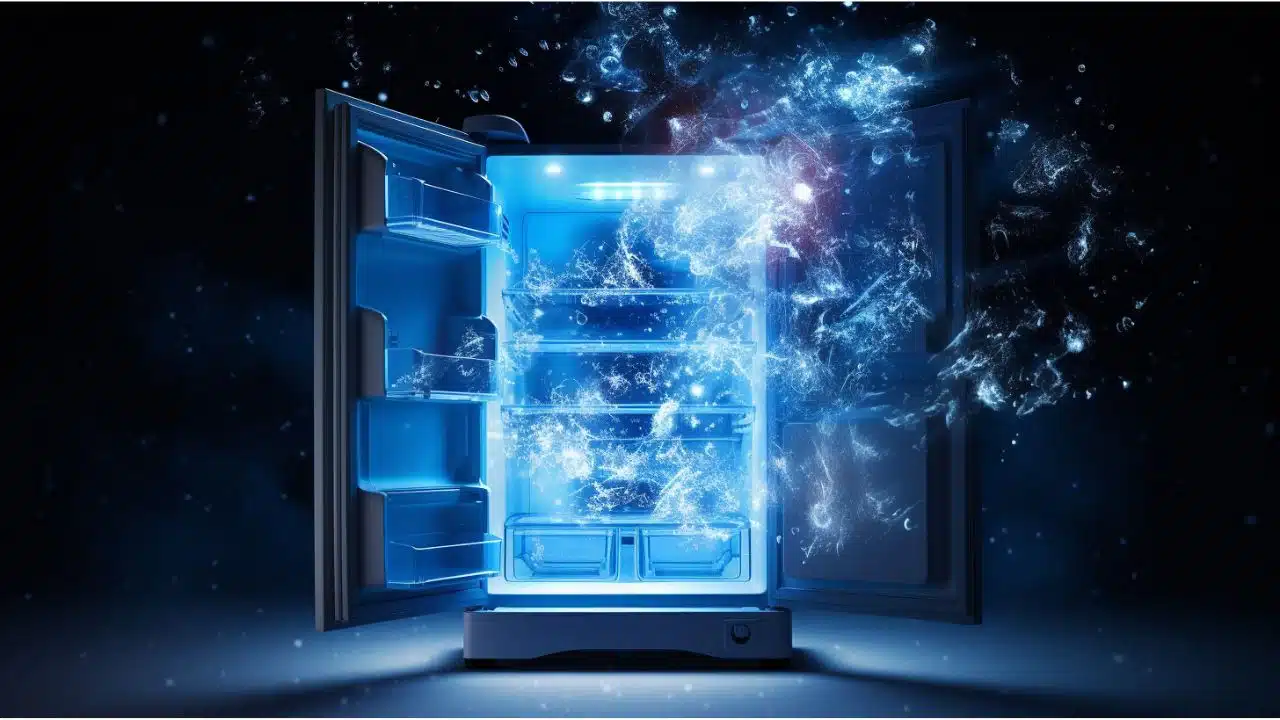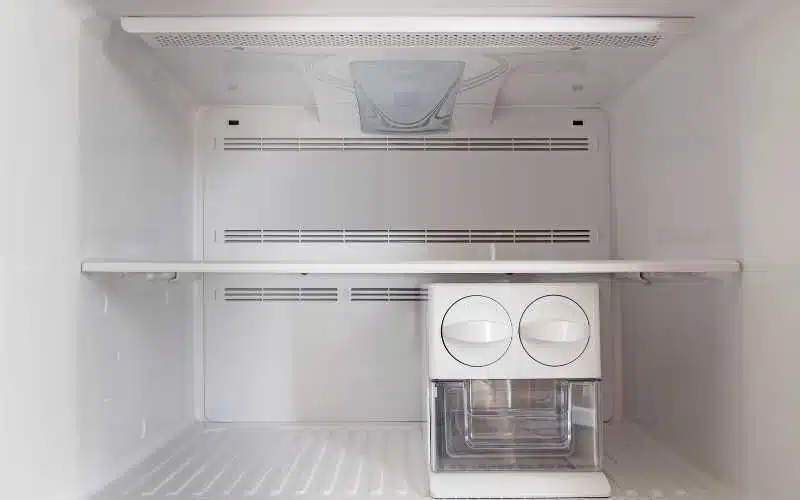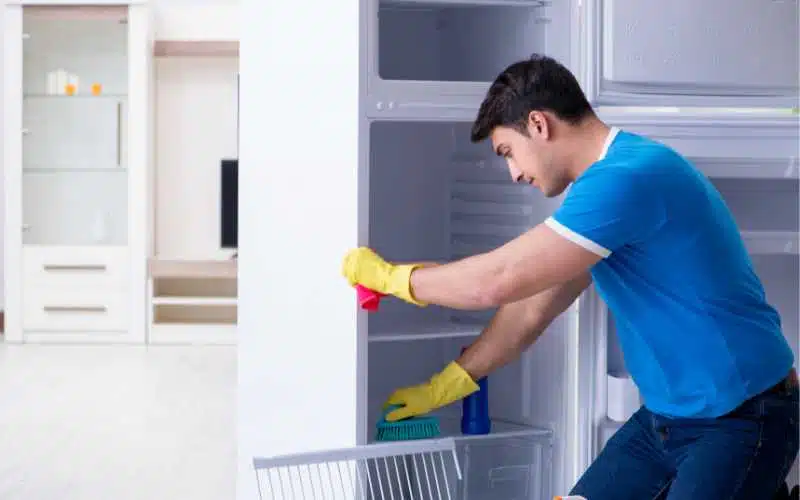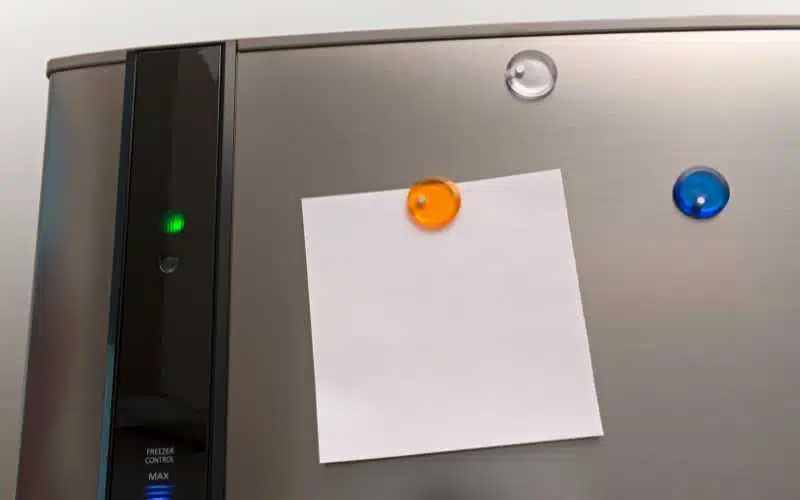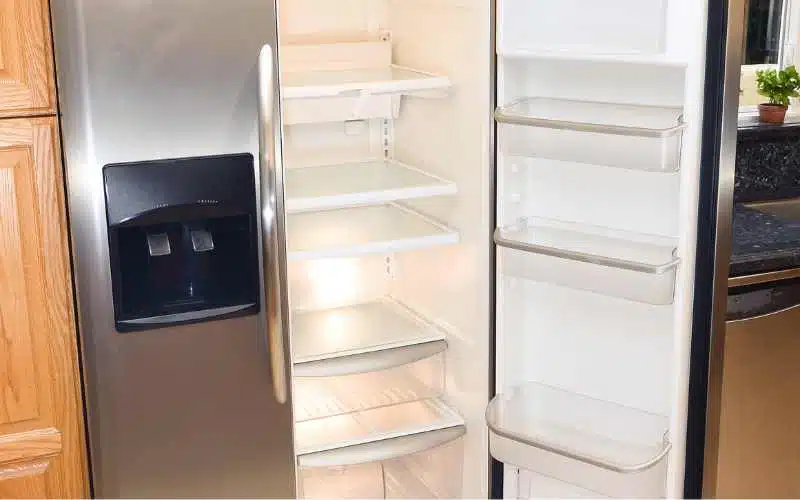To keep your KitchenAid refrigerator on, you should periodically empty the water draining from the refrigerator’s defrost drain tube.
If you don’t dispose of this water, it can harden, causing clogs in the drain tube or defrost pan. This can prevent cold air from circulating throughout the refrigerator
After years of using your KitchenAid refrigerator, you may notice water collecting in the bottom of the freezer section.
It isn’t always because there’s something wrong with your refrigerator; it could result from your kitchen sink drain or dishwasher overflow.
This guide will explain the location of the defrost drain tube to avoid clogging.
To access the location of your KitchenAid refrigerator defrost drain, you need to look in the backplate of your refrigerator. The drain tube connects the inside of your refrigerator with the outside world, and if you don’t know its location, water could pool in your bottom and cause damage over time.
Where Is the Defrost Drain On the KitchenAid Refrigerator?
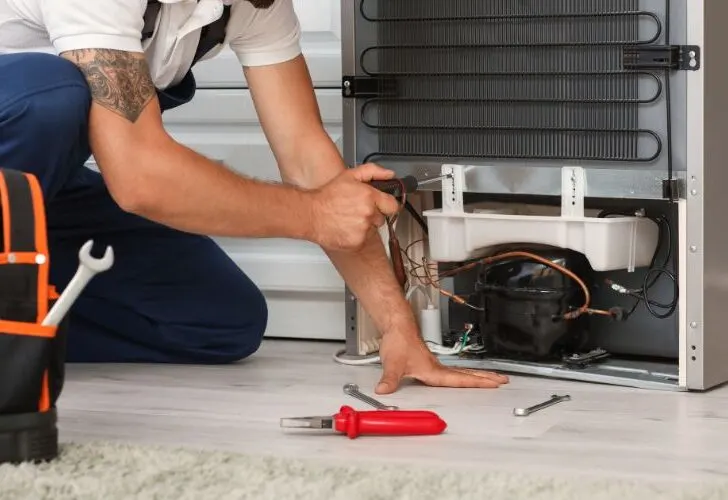
If your KitchenAid refrigerator is leaking water, the problem may be with the defrost drain.
The location of the defrost drain tube is behind the refrigerator dispenser. If you plug the defrost drain, the water will eventually leak out.
Most refrigerator models have the defrost drain tube and drain hole on the freezer compartment’s back wall.
Find the drain tube and drain hole in the lower portion of the freezer by looking near the bottom of the appliance. Plastic panels sometimes cover the floor opening and drain pipe.
If necessary, you can take off the panel by using a screwdriver. At this point, you should be able to see the drain tube as well as the drain hole.
If you are unable to identify the drain hole, there’s a possibility that your refrigerator does not have one situated in this spot.
Plugged Defrost Drain Line In KitchenAid Refrigerator KTRS22KHBT00
A plugged defrost drain line is one of the most common refrigerator dispenser problems.
If your KitchenAid refrigerator leaks, it’s likely because the defrost drain line is clogged. To fix this, you’ll need to locate the defrost drain line and clear it to fix it.
And to access it, you’ll need to remove the kick plate. Follow these procedures to fix it:
First, turn off your refrigerator. You’ll need to shut it down and unplug it, so you don’t get shocked when removing the kick plate.
After about ten minutes, pull out a few of your refrigerator’s shelves so that you have enough room to move around inside.
Use a screwdriver for popping off all of your refrigerator’s kick plates, starting from either side of your appliance and working toward the middle.
After removing all of your refrigerator’s kick plates, you should see a small hole in the back corner of your device. You can find your refrigerator defrost drain line here.
Use a flashlight to look into it and check for any obstructions. If you see one, use a vacuum cleaner to suck it out of there, but be careful not to damage anything by sucking too hard.
Once you’ve ensured you’ve cleared everything out, put everything back together and turn on your refrigerator again.
Test your refrigerator’s dispenser to make sure it works properly. If it still doesn’t work, you may need to call a professional to help you.
KitchenAid French Door Refrigerator Defrost Drain
The drain location in your KitchenAid French Door Refrigerator is in the freezer compartment, behind the kickplate.
If your KitchenAid refrigerator is leaking water, the problem is likely with the defrost drain.
To fix this issue, you must clean the defrost drain tube. First, remove the kickplate by unscrewing the two screws that hold it in place.
Then, locate the small hole in the back of the freezer compartment. It is the location of the defrost drain tube.
Using a thin object such as a paperclip, fish it through your KitchenAid French door refrigerator’s defrost drain hole.
You will feel it when you run into any ice buildup in there. It may take a couple of tries to clear it out, but once you do, you should no longer have water leaking from your refrigerator.
Check all areas where water could leak, clean out any remaining clogs, and reattach your kickplate.
You can also clean the drain of your KitchenAid French Door Refrigerator in the case of a clogged drain by following the steps below.
Remove the crisper drawer and use a paperclip or similar object to clear any debris from the drain hole.
You may also need to use a plunger to unclog the drain tube. To access your KitchenAid French Door Refrigerator’s drainage system, you must first remove both of its crisper drawers.
The clog is generally at the bottom of one of these compartments, but if it has moved further into one, use a flashlight to see where it is before removing any drawers.
Next, locate your freezer’s defrost drain tube. It is in front of your crisper drawers and has a line running from it to your refrigerator compartment.
To access it, remove a few screws and lift off your defrost drain cover plate. You will see two tubes: one for hot water and one for cold water. You should connect your drain tube to both of these tubes.
Clear away any debris in your drain tube with a paperclip. If your defrost drain clog is further up in one of your crisper drawers, remove one of their front panels to access it and repeat these steps.
Lastly, use a plunger to clear any obstructions from your drain tube and completely unclog it.
With these three easy steps, you should be able to clear out almost all the clogs in your KitchenAid French Door Refrigerator’s drainage system.
How Do I Clean the Defrost Drain On My KitchenAid Refrigerator?
There’s a possibility that the defrost drain on your KitchenAid refrigerator is clogged, which would cause it to leak.
Follow these instructions to clean out the drain tube for your defrost system:
- Remove the plug from the refrigerator.
- To access the underside of the drain, you will need to unscrew all of the screws that keep the backplate in place.
- To clear the blockage in the drain pipe, you will need to loosen the screw that is keeping the tube in place.
- You’ll need to use a wrench on it to open it.
- To clean the area around the drain, remove any food or debris that may be there.
- To clean out the drain hole, you can use a straightened paperclip or another similar object to clean out the drain hole. If you cannot remove anything by using a paperclip that you have straightened, you may want to explore using tweezers to remove larger objects.
- Finally, flush the area with warm water after removing any material that may still be present.
The defrost drain tube can be cleaned by adding baking soda to the warm water and continuing to do so until there is no longer any obstruction.
Please turn on your refrigerator after you have plugged it in.
How Do You Clean the Refrigerator Defrost Drain Pipe?
It’s possible that the defrost drain line on your KitchenAid refrigerator is clogged, which would explain why it’s leaking.
With the correct equipment, clearing out the obstruction in the defrost drain pipe of a KitchenAid refrigerator may be a breeze.
To begin cleaning it, you must first find the drain pipe. It must be toward the refrigerator’s rear and close to the floor.
Then follow the steps in the table below:
| Step | Particulars |
|---|---|
| Step 1 | Insert a pointed object into the obstruction to pierce it and remove it. |
| Step 2 | Remove any debris that could be obstructing the line. |
| Step 3 | Run clean water through the tube to clean it. |
| Step 4 | Disinfect the pipe using bleach or another cleaning solution. |
| Step 5 | Finally, run hot water through the pipe to clear debris and reattach it to the refrigerator. |
Conclusion
Knowing the location of your KitchenAid refrigerator defrost drain is significant as it saves your refrigerator from damage.
As minute as it seems, it is essential to do this as your KitchenAid refrigerator won’t defrost itself. So cleaning it is your best bet, and it’s pretty easy too.
